
Our 7 hour bus ride to La Quiaca on the Argentine border was reasonably comfortable and we arrived at 7.30am. It was freezing cold but we were treated to a spectacular sunrise. We walked with two other travellers, Antoine (French) and Johanna (German) – who we met at the bus station the night before in Salta – to the border which was about 1km from the bus station. We were pretty short of breath during the walk as we’d climbed about 2km in altitude during the bus journey. After getting our exit stamps from the Argentine immigration office we walked across the bridge into Bolivia. After a small queue and some simple checkpoint formalites we headed into the Bolivian town of Villazón. It was the first time I’d ever crossed a border on foot.
We changed our Pesos for some Bolivianos and walked another kilometre to the Villazón bus station. Once we arrived we began hearing rumours from other travellers of protests in the city of Potosí – one of the places on our itinerary. We had other plans before we’d arrive there though so we had some time for it all to die down. We caught another bus along the partly sealed, dusty road to Tupiza, arrived there 3 hours later and had found and checked into a hostel soon after.
After booking ourselves onto a couple of tours, all 4 of us headed out for lunch. It was 2pm, the siesta was well and truly in effect and Tupiza was like a small, dusty old ghost town. After half an hour of searching we found a single open restaurant. The receptionist at our hostel had told us of a place in town to definitely not eat at if we wanted to keep our digestive systems in order. But could any of us remember the name she gave? No. There wasn’t any other option. We had to eat, and we had to be back at the hostel for our first tour at 3pm. It didn’t look too great but we headed in anyway.
Pizza. We all agreed it was a safe bet. We asked what type of pizza they had. ‘Pizza con carne’ was the reply. Could we have it without the meat? ‘No.’ Did they have any other pizzas? ‘No.’ Pizza con carne it was then. After a surprisingly ok starter of vegetable soup (a traditionally Bolivian way to start a meal), the pizza arrived. We immediately realised why we couldn’t have it without the meat. It seemed like an animal (cow/llama/horse?) had been skinned and that skin, with about a centimetre of poorly cooked meat beneath it, formed the ‘base’ of our pizza. After moving it around to figure out what the hell it was, we ate the rice and potatoes it came with, while trying not to look at the rest of the meal on our plates.
Pizza con carne. Of course. Why did I ever expect anything else?
 As we headed back to the hostel we were frustrated as we passed numerous decent-looking restaurants that had begun to open after the siesta. But we walked on and at 3pm, went on our first tour – a 3 hour horseride through the red wilderness of dusty quebradas and cacti. It was true cowboy country (think Butch Cassidy and The Sundance Kid) and our ride went out as far as El Cañón del Inca where we were completely surrounded by the huge red walls of the canyon. It was great fun and after my first ride in La Cumbrecita a week-or-so before it was good to have a horse that would trot on command! That evening, with everything open again, all 4 of us went to a restaurant recommended in our guide book and had a pretty decent meal. This time… vegetarian.
As we headed back to the hostel we were frustrated as we passed numerous decent-looking restaurants that had begun to open after the siesta. But we walked on and at 3pm, went on our first tour – a 3 hour horseride through the red wilderness of dusty quebradas and cacti. It was true cowboy country (think Butch Cassidy and The Sundance Kid) and our ride went out as far as El Cañón del Inca where we were completely surrounded by the huge red walls of the canyon. It was great fun and after my first ride in La Cumbrecita a week-or-so before it was good to have a horse that would trot on command! That evening, with everything open again, all 4 of us went to a restaurant recommended in our guide book and had a pretty decent meal. This time… vegetarian.
The next morning we were up early to begin our tour around the areas of Bolivia that most people come to the country to see. The tour we had planned was a 1200km, 4 day off-road journey around what’s known as The Southwestern Circuit, through one of the world’s harshest wilderness regions, ending in Uyuni. All 4 of us left Tupiza in a 4WD with our guide and driver Sergio and our cook Emma. Within an hour we were already driving through some of the most beautiful landscapes we’d ever seen, many of the hills had vertical stripes of rock visible on their surface, showing how layers and layers of volcanic rock had cooled then been tipped almost 90 degrees over millions of years of tectonic plate movement. We climbed a huge amount during the morning and with a bit of a headache, had our first lunch break at 3600m served out of the back of the 4WD. We then travelled through some small villages, saw a couple of lagoons and had a distant view of Volcan Uturuncu. That night we stayed in a hostel in a tiny village called Quetena Chico. It was 4200m high and got extremely cold once the sun had set. A short stroll outside away from the light of the village meant that I could see a starry sky that rivalled the one we saw while sleeping on the sand dunes in the Great Thar Desert in Rajasthan. The amazingly dense stripe of stars of the Milky Way stretched across from the north east horizon to the south west horizon. It was only the cold that kept me from staying out there for too long – well, that and the wonderful soup that Emma made that evening. It helped us cope with the cold for a while. Antoine surprised us by bringing along a bottle of red wine, but the heavy increase in altitude that day meant that we didn’t really feel up for drinking and had to decline his offer. We all stayed up playing cards for a few hours before deciding to get an early night.
The next morning we travelled further south west, through the village of Quetena Grande before reaching the entry point of the Reserva Nacional de Fauna Andina Eduardo Avaroa, a 7150 sq km national park in the south western corner of Bolivia. We paid our entry fees and drove on. We were definitely on top of the Bolivian altiplano now as the amount of altitude change was considerably less on the 2nd day. It was a long journey but it certainly wasn’t the sort of journey that got boring. The landscape would change so much over such short distances, both in colour and terrain. We passed the Salar de Chalviri – a small salt flat – and stopped at a few lagoons where we got our first glimpse of the flamingos that breed in the high country.
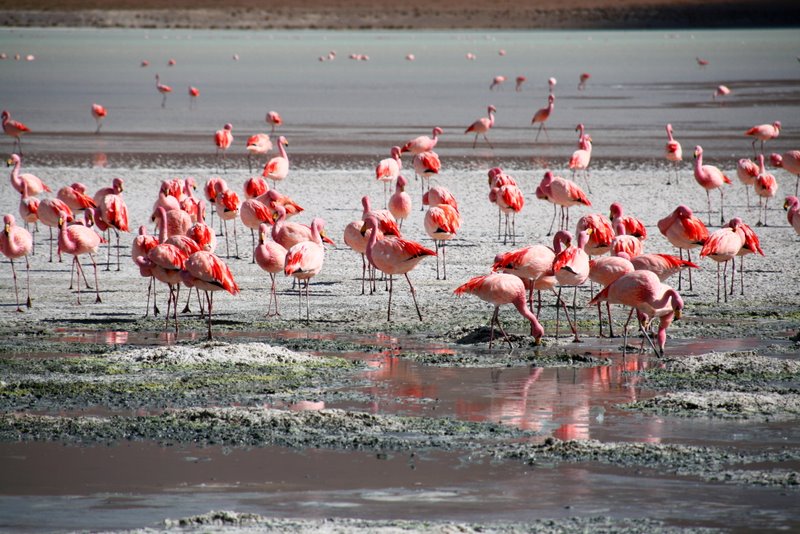
We then entered the region of Los Lipez and after a few more hours of driving we reached the very south western corner of Bolivia. There we stopped at a ridge of grey rock and got out of the car for a stunning view of Laguna Verde – a massive and vibrantly green lagoon that gets its colour from the huge amounts of lead, sulphur, arsenic and calcium carbonates in the water, it’s basically a big poisonous lake. Behind the lake was the huge Volcan Licancabur which sits on the border between Bolivia and Chile. Sergio told us to just wait for a while, to enjoy the view and to watch the lagoon. As we did the water got progressively greener as the chemicals reacted to the increasing light from the sun as it rose in the sky. From where we were we also got a glimpse of a live (and smoking) volcano!
As this was as far south west as we could go in Bolivia, we turned back and took a slightly different route north. After another hour or so of driving we arrived at the Termas de Polques. A real treat in the heart of such a cold, harsh part of the world. It’s a small 30 degree geo-thermal hot spring pool in the middle of 4200m high nowhere. We all spent half an hour relaxing in the pool surrounded by a magnificent steaming landscape. Refreshed after our dip, we had yet another great lunch that Emma seemed to have created from nothing, and carried on northbound.

The next stop was truly amazing. We took a sudden left turn from the road and within 10 minutes the ground had turned from dusty red to rocky grey and it felt like an odd lunar landscape, only something was missing. Then a short while later we realised what it was… craters. We’d arrived at the 4850m high Sol de Mañana Geyser Basin and all around us were multicoloured craters of bubbling mud and the thick and nauseating aroma of sulphur fumes. There was a freezing cold wind but we could stand near the steaming, bubbling holes in the ground to keep warm. We spent 45 minutes wandering around the craters, trying not to get splattered by boiling mud and being careful not to step on any damp or cracked earth which apparently could cave in quite easily. It really felt like we were walking around on another planet.

Our final stop on our 2nd day was Laguna Colorada. A 60sq km firey red lagoon, only 80cm deep, fringed with bright white minerals, and populated with hundreds more flamingos. After a short walk around part of the coast we drove to our rest stop for the night, slightly inland from the edge of the lagoon. It was only about 4pm and we had a whole evening to kill so we decided to take a walk up to a nearby viewpoint for a high view of the lagoon as the sun set. Yet again Antoine was disappointed when we all declined his offer of wine. Dinner without wine, the Frenchman wasn’t impressed.
The third day was unbelievably windy as we made our way north. We passed odd rock formations and valleys and the rougher terrain was a little more preferable as we could hide from the wind. As the land flattened out and we began to drive along sandy desert, we found ourselves being chased by small tornadoes.  At one point we briefly stopped at the side of the road to let a truck past and as we did I looked out of my window to see a tornado about 20m wide raging towards our car. The whole 4WD wobbled and there was a loud hiss as it was pelted with huge amounts of sand as the tornado passed right over us. The landscape turned from bumpy sandy desert to completely flat salt and although the ride was more comfortable, there were a few occasions when we’d have to drive into a wall of completely opaque dust. Visibility was zero and we would just have to proceed at a crawl, in a straight line and hope that when we got out the other side of the dust (if we weren’t hit by an oncoming vehicle) we’d still be able to see the tyre tracks that formed the road. We stopped for supplies at a shop in the dusty, windy town of San Juan. There we heard that the protests were ongoing and road blockades had extended out from Potosí as far as Uyuni, our final destination. We didn’t know whether we’d be able to get into Uyuni but we’d just had to hope that the protests would be over by the next afternoon, when our tour was due to end.
At one point we briefly stopped at the side of the road to let a truck past and as we did I looked out of my window to see a tornado about 20m wide raging towards our car. The whole 4WD wobbled and there was a loud hiss as it was pelted with huge amounts of sand as the tornado passed right over us. The landscape turned from bumpy sandy desert to completely flat salt and although the ride was more comfortable, there were a few occasions when we’d have to drive into a wall of completely opaque dust. Visibility was zero and we would just have to proceed at a crawl, in a straight line and hope that when we got out the other side of the dust (if we weren’t hit by an oncoming vehicle) we’d still be able to see the tyre tracks that formed the road. We stopped for supplies at a shop in the dusty, windy town of San Juan. There we heard that the protests were ongoing and road blockades had extended out from Potosí as far as Uyuni, our final destination. We didn’t know whether we’d be able to get into Uyuni but we’d just had to hope that the protests would be over by the next afternoon, when our tour was due to end.
We continued on to our rest stop for the night but worryingly, they didn’t have any water, petrol or electricity. The road blockades had been having a bigger effect than we thought while we had been away from civilisation for the past 3 days. We heard that it was also difficult to get petrol everywhere which, as Sergio told us, could affect our final day on the tour. He decided to drive us on to another hostel he knew, slightly further north. It was in a place called Chuvica, right on the edge of the Salar de Uyuni, our final big destination of the tour and the thing most tourists come to Bolivia to see. We had an amazing view of the Salar from our hostel that evening, but what made it even more interesting was the fact that our hostal was MADE of salt. Apart from obvious things like toilets, taps and windows, pretty much everything was made of the lovely white condiment. The walls, tables, chairs and even beds (there were matresses on top thankfully) were made of it, and everywhere we walked we’d hear the crunch of grit salt beneath our feet.
Over dinner Sergio told us that the blockades meant that we wouldn’t be able to get enough petrol to complete our tour as planned, and that we’d have to miss a drive halfway up Volcan Tunupa for a great view of the Salar. It was a shame but we were all more concerned about being able to get into Uyuni at the end of the tour. Along with another great meal Sergio brought out a bottle of wine and uncorked it for us. We could hardly refuse, but soon realised that it tasted like shit and once Sergio had left us alone, we resorted to finally having Antoine’s bottle instead. We all headed to our salt block beds wandering what the next 24 hours would bring.

If you’ve read this far, well done. You’ve manage to get through almost all of the ‘we did this’ and ‘we saw that’ stuff. Things started to get a little more interesting on the following day…
We woke early to see the sunrise over the Salar de Uyuni – the world’s largest salt flat, 3650m high and covering an amazing 12106 sq km – and drove right to the center of the flat to Isla Incahuasi. We arrived to see 3 4WDs already there. Sergio told us that there would usually be about 30 or so by that time of the morning. The blockades had clearly affected tourism. Our guide book described Isla Incahuasi as an odd cactus-filled island in the middle of an other-worldly sea of bright white nothingness, a place that is enjoyable if you can ignore the hordes of other tourists bustling for the perfect photograph. Today though, other than the 4 of us, there were no tourists at all. We had the whole place to ourselves, which was amazing. We wandered the island with its giant cacti, taking photos and admiring the tourist-free view. When we got back to the car Sergio and Emma told us over breakfast (which included sponge cake – how the hell did she bake a cake?!) that they really weren’t sure what they were going to do. They barely had enough petrol to get us back to Uyuni, and that was IF they could get us back to Uyuni because of the blockades. They had enough to get back to San Juan where there was apparently an unblocked route to Uyuni but they’d heard that there was no petrol to buy there anyway so that was pointless.
We had no idea what we were going to do. There was no phone signal so we couldn’t find out what was happening. We couldn’t figure out which was the best route to take to return to Uyuni. We were stuck, and of all the places in the world to be stuck, we were stuck here:
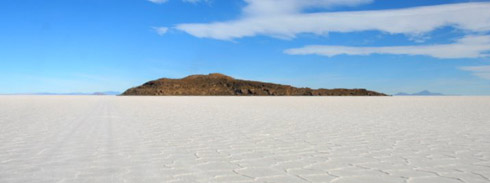
After a bit of a wait Sergio decided to take the most direct route to Uyuni. He had to get us back there by that afternoon. Firstly because he and Emma don’t live there, they live in Tupiza, so they had to try and find some petrol to get them all home once they’d dropped us off. He also had to pick up his son in Uyuni. Oh, and there was the small matter of Alexandra and I oweing him B$1400 (Bolivianos, about £130) as we’d only paid a portion of the cost of the tour up-front, so he had to get us to the one and only ATM in town as soon as possible. We stopped halfway along the Salar to take some tricky perspective-related photos (as everyone does there), and as on the island, there were no other cars to be seen. It was one of the most tranquil places we’ve ever visited and we realised that not many people get to see it in the way we were.
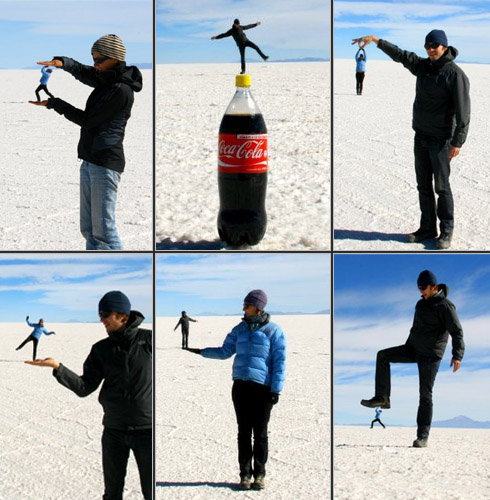
We drove closer to Uyuni, stopping at a hotel built on the salt to try and get a phone signal – no luck, even with Sergio standing on top of the car – before heading to the edge of the Salar. It was then that we caught a glimpse of a blockade. There were a few trucks and vans waiting to get past what was simply a row of small rocks placed on the road.  There were crowds of protesters just hanging around, some with balaclavas on – to hide their faces or to keep warm, we weren’t sure. We couldn’t decide whether it was a threatening situation or not, but as we pulled into the queue of vehicles at the blockade, Sergio told us that as long as we didn’t break the road block, they’d remain peaceful. So we waited, and the playing cards came out once again.
There were crowds of protesters just hanging around, some with balaclavas on – to hide their faces or to keep warm, we weren’t sure. We couldn’t decide whether it was a threatening situation or not, but as we pulled into the queue of vehicles at the blockade, Sergio told us that as long as we didn’t break the road block, they’d remain peaceful. So we waited, and the playing cards came out once again.
After about 2 hours of sitting at the blockade watching the protesters hanging around, they all grouped together for a meeting. Then someone aproached our car, had a chat with Sergio and Emma and then left. We weren’t sure what was said but Sergio then started the engine and took another route to Uyuni.
Within 20 minutes we’d arrived at another blockade. It seemed every route to Uyuni was blocked and all we could do was wait to be let through. Some other tourist 4WDs arrived and we even saw a couple of 4WDs stuck a few kilometres away in the middle of the Salar.  We heard that with only a little fuel left, they had tried to take a path off the designated tracks and the salt collapsed beneath their cars. People were getting stranded out here but everything remained calm and fortunately non-violent towards us. Occasionally we’d see a car approach the blockade at an angle that made it look like it was going to pass the block. Then we saw how the protesters would react. They’d all run towards the car with rocks in hand, shouting and threatening to throw them at the windows until it stopped. It seemed everything would be fine and noone would get hurt, we just had to wait. They just wanted to cause some disruption.
We heard that with only a little fuel left, they had tried to take a path off the designated tracks and the salt collapsed beneath their cars. People were getting stranded out here but everything remained calm and fortunately non-violent towards us. Occasionally we’d see a car approach the blockade at an angle that made it look like it was going to pass the block. Then we saw how the protesters would react. They’d all run towards the car with rocks in hand, shouting and threatening to throw them at the windows until it stopped. It seemed everything would be fine and noone would get hurt, we just had to wait. They just wanted to cause some disruption.
After a couple of hours of waiting Emma served lunch in the 4WD, and we continued with the card playing. Sergio kept getting out of the car to chat to the other guides to try and find out what was going on. Then our day took its most unexpected twist. 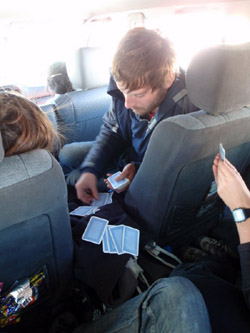 We were in the middle of what was probably our 50th round of ‘Arsehole’ (the card game) when Sergio decided to jump into the car and turn it around. He’d done this before to park it out of the wind behind another vehicle so it wasn’t so out of the ordinary. Except just as we thought he’d stop the car, he decided to slam his foot down on the accelerator! He drove us over some nearby train tracks that travelled along the road to Uyuni and off-road into some pretty dense bush land north of the road at high speed. The crazy guy was trying to make a run for it, with the 4 of us in the back! The protesters chased after us on foot and were throwing rocks in our direction, while the tourists started cheering and beeping their horns in support. Obviously this was completely unexpected for the 4 of us in the back of the car and we were bouncing around all over the place, each still holding a set of cards in our hands, while trying to come to terms with what Sergio had just done.
We were in the middle of what was probably our 50th round of ‘Arsehole’ (the card game) when Sergio decided to jump into the car and turn it around. He’d done this before to park it out of the wind behind another vehicle so it wasn’t so out of the ordinary. Except just as we thought he’d stop the car, he decided to slam his foot down on the accelerator! He drove us over some nearby train tracks that travelled along the road to Uyuni and off-road into some pretty dense bush land north of the road at high speed. The crazy guy was trying to make a run for it, with the 4 of us in the back! The protesters chased after us on foot and were throwing rocks in our direction, while the tourists started cheering and beeping their horns in support. Obviously this was completely unexpected for the 4 of us in the back of the car and we were bouncing around all over the place, each still holding a set of cards in our hands, while trying to come to terms with what Sergio had just done.
As soon as he felt he was far enough away from the road he turned a sharp right to head towards Uyuni about a kilometre north of the actual road. We all looked to our right, towards the road. We could all see a dust cloud that was being kicked up by one of the protesters’ cars that had peeled away from the blockade to give chase. Sergio kept glancing to his right too, he clearly knew they were chasing. I looked out of the rear window, there was plenty of dust from our car too. They’d know exactly where we were, just as we knew where they were, and they were on a road, while we were dodging bushes and ditches and travelling much more slowly. We all started to worry what the consequences would be if they caught us, which was looking likely! I realised that we were all laughing about the situation, but it was a kind of nervous, crazed laughter. This was insane… we were in the middle of an off-road car chase in Bolivia, not something that was part of the itinerary!
Without warning Sergio mumbled something to Emma, stopped the car abruptly and hopped out. I thought there was something wrong with the car. He paced away in a straight line, it was as though he’d given up. We all watched him walk, confused at why he’d give up here after all that effort. He stopped, still facing away from us, stood for a while, then returned to the car. Everybody needs to piss I suppose. He was clearly much more relaxed about the situation that we were.
 It seemed that Sergio’s toilet stop was a good move. We could no longer see any dust from the car on the road. Had we lost them by stopping our dust trail? After a few more minutes and a stop at a farmhouse to ask for directions to another road to Uyuni, we were heading in the right direction again, only much faster now. We approached the outskirts of Uyuni, and we could see lots of people walking around. We didn’t know who was a protester and who wasn’t and, if any of them were, whether they knew about our recent escapade only a few kilometres up the road. Sergio kept up the speed as we approached them and luckily noone seemed to care about our presence. As we headed for the safety of the buildings, where we could blend in, we drove by a dusty, rubbish strewn football pitch where there was a game being played. I turned to follow the game as we passed it by and then out of the rear window, I saw 3 more 4WDs speeding towards us from the very bush land we’d just come from! They were obviously tourist 4WDs, as they had backpacks strapped to their roofs. It seemed they’d decided to follow our lead and break the blockade, but they were too late! As we headed into a long street I saw about 20 people running for the 4WDs throwing rocks at them, then a car sped in from the direction of the main road into the town and tried to cut off the tourist convoy. The first 2 4WDs got out of the bush land in time to get away from the car but the 3rd had to take evasive action as the car drove right into its path. It avoided what would’ve been a terrible crash just as we turned a corner and we lost sight of the action that we would’ve been involved in if we were only 30 seconds later.
It seemed that Sergio’s toilet stop was a good move. We could no longer see any dust from the car on the road. Had we lost them by stopping our dust trail? After a few more minutes and a stop at a farmhouse to ask for directions to another road to Uyuni, we were heading in the right direction again, only much faster now. We approached the outskirts of Uyuni, and we could see lots of people walking around. We didn’t know who was a protester and who wasn’t and, if any of them were, whether they knew about our recent escapade only a few kilometres up the road. Sergio kept up the speed as we approached them and luckily noone seemed to care about our presence. As we headed for the safety of the buildings, where we could blend in, we drove by a dusty, rubbish strewn football pitch where there was a game being played. I turned to follow the game as we passed it by and then out of the rear window, I saw 3 more 4WDs speeding towards us from the very bush land we’d just come from! They were obviously tourist 4WDs, as they had backpacks strapped to their roofs. It seemed they’d decided to follow our lead and break the blockade, but they were too late! As we headed into a long street I saw about 20 people running for the 4WDs throwing rocks at them, then a car sped in from the direction of the main road into the town and tried to cut off the tourist convoy. The first 2 4WDs got out of the bush land in time to get away from the car but the 3rd had to take evasive action as the car drove right into its path. It avoided what would’ve been a terrible crash just as we turned a corner and we lost sight of the action that we would’ve been involved in if we were only 30 seconds later.
Sergio calmly slowed down and cruised along the wide dusty streets of Uyuni. I got one more glimpse of a speeding tourist 4WD as it crossed a street in the distance, but noone was following. My heart was still pounding as Sergio stopped across the road from the only ATM in town. I ran across the road to get the cash. We just needed to pay him, take our bags then we could all disperse and noone else would ever know what just happened.
The ATM was out of service. Perfect.
After a long search we ended up getting a cash advance (with a hefty comission) at a restaurant, but they only had enough cash to give us the money to pay Sergio. We paid and said our goodbyes to Sergio and Emma and thanked them for a day we’d never forget, then found ourselves a cheap hostel. Uyuni was heaving with backpackers as noone had been able to get out for the past few days. So as we were lucky to get a room at all, we decided to pay for 2 nights. While standing in the lobby of the hostel that night we heard from other backpackers that the British and Canadian embassies had heard about the trouble in Bolivia and had persuaded the local police to make a deal with the protesters and arrange a police-escorted tourist-only bus service out of Uyuni the next morning. But… we didn’t have enough money to buy the tickets as they were more than double the standard price. I had to lie to the hostel receptionist and say that I didn’t have enough cash left for dinner that night and that I’d need my 2nd night’s payment back, but that I’d rebook the room the next day once the bank opened.
 With our newly reclaimed 100 Boliviano note, we had enough to buy tickets AND have dinner, so we queued up outside the police station and bought our tickets to Oruro. Then we all celebrated surviving our action-packed day unscathed with pizza and a few beers.
With our newly reclaimed 100 Boliviano note, we had enough to buy tickets AND have dinner, so we queued up outside the police station and bought our tickets to Oruro. Then we all celebrated surviving our action-packed day unscathed with pizza and a few beers.
At 5.15am the next day, all 4 of us were at the front of the queue outside the police station for the 6am bus. We caught one of two buses from there and within 5 minutes of driving were stopped at the blockade at the edge of town. It was dark outside but we could see the blockade which was marked with piles of burning tyres on the edges of the road. Some of the protesters boarded the bus and were surprisingly pleasant to all of us. They just wanted to check that all of the passengers were tourists. They weren’t. There were 3 Bolivians on our bus and even more on the other one. They had somehow managed to buy their tickets on the black market. According to the protesters, the deal had been broken and now noone was going to be leaving Uyuni at all.
After about an hour and lots of persuasion from the police, the Bolivians got off the buses. Thinking that we’d then drive on to the safety and ATMs of Oruro with ease, Alexandra gave the Bolivians most of our remaining cash. Unfortunately it wasn’t that simple and we were left for another hour and a half wondering how we’d survive another night in Uyuni, before the protesters agreed to let us pass the blockade. As the deal had been broken though, the protesters decided that these were to be the only buses to pass the blockade from then until the end of the protest, whenever that may be. They advised the police to go back into town and find enough tourists to fill the empty seats as it would be their last chance to get tourists out of the town. Another hour later more tourists boarded the buses and we all passed though peacefully.
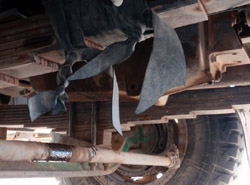 It was a long and arduous journey. We had to take a huge detour to avoid the main roads to Oruro as there were many other blockades along that route. We were driving on real 4WD terrain, only we were on a bus. Within the first hour part of the suspension on our bus broke, and was fixed with a rough and ready bit of rubber strapping. Then a few kilometres further the axel of the other bus broke. After waiting around for another hour watching them remove the wheels and try to dismantle the axel bearings using Coca-Cola as a lubricant, the driver of our bus decided to proceed leaving the other bus behind. It was the last we saw of them.
It was a long and arduous journey. We had to take a huge detour to avoid the main roads to Oruro as there were many other blockades along that route. We were driving on real 4WD terrain, only we were on a bus. Within the first hour part of the suspension on our bus broke, and was fixed with a rough and ready bit of rubber strapping. Then a few kilometres further the axel of the other bus broke. After waiting around for another hour watching them remove the wheels and try to dismantle the axel bearings using Coca-Cola as a lubricant, the driver of our bus decided to proceed leaving the other bus behind. It was the last we saw of them.
On the normal roads the journey from Uyuni to Oruro would’ve taken 8 hours. Our journey took nearly 21. 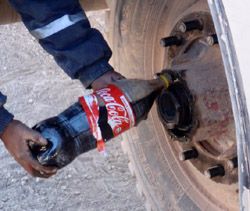 We had to cross the entire Salar de Uyuni again, and we noticed that many of the people on the bus were seeing it for the first time, as they never had the chance to get onto a tour because of the protests. We realised how lucky we were to have seen it in the way we did. Once we got to the northern side of the Salar, yet another blockade stopped us as they hadn’t heard about the police agreement and, despite us being a bus of tourists with a policeman sitting at the front, didn’t believe our story. A couple more hours of waiting and negotiation by one of the tourists and the policeman with the protesters and we were on our way again. We finally arrived in Oruro at about 2.45am the next morning and not wanting to stay there, gritted our teeth and bought tickets for the first available bus to La Paz, which left at 3.30am.
We had to cross the entire Salar de Uyuni again, and we noticed that many of the people on the bus were seeing it for the first time, as they never had the chance to get onto a tour because of the protests. We realised how lucky we were to have seen it in the way we did. Once we got to the northern side of the Salar, yet another blockade stopped us as they hadn’t heard about the police agreement and, despite us being a bus of tourists with a policeman sitting at the front, didn’t believe our story. A couple more hours of waiting and negotiation by one of the tourists and the policeman with the protesters and we were on our way again. We finally arrived in Oruro at about 2.45am the next morning and not wanting to stay there, gritted our teeth and bought tickets for the first available bus to La Paz, which left at 3.30am.
We did end up getting to La Paz later that morning. But something unsurprising happened an hour into the 4 hour journey. Our lovely, modern, comfy bus… broke down.
Bolivia, thanks for the memories.
The next time we had Internet access, we checked out how much the British and Australian Governments had changed their warnings…
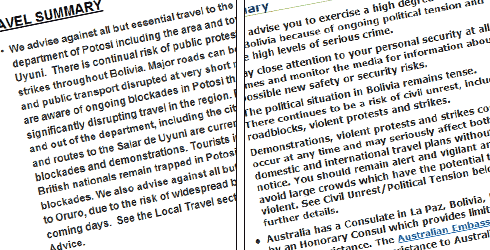


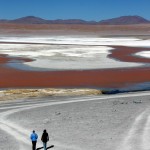
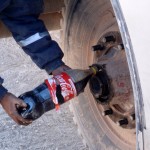
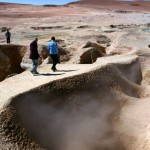

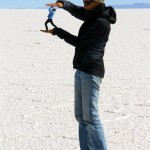
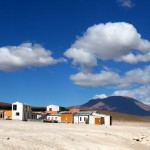

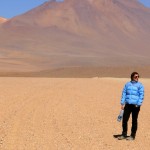
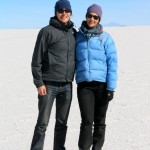





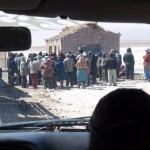
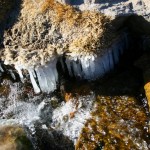

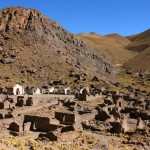




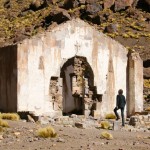


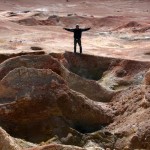

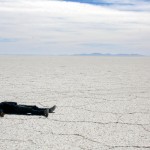
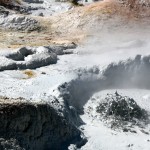
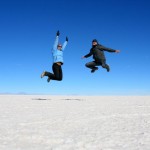
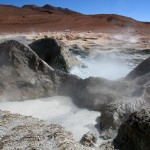
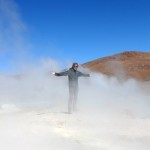



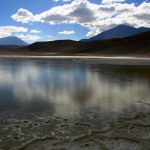
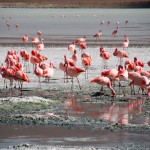

wow thats an adventure and a half! Glad you got out safely and still managed to see a lot of bolivia! xxx
Hey Guys,
Might have been an arduous time for the both of you, but it makes an excellent story to have for life. The pictures also look awesome. See you soon!
Keep safe 🙂
Cheers Kyle.
Yup, some good memories to bring home with us… and because we’ve written it all down like this we won’t have to bore anyone with the stories. We’ll just hand out web links pre-printed on little cards.
See you in a few months!
ye gawds it’s weird to see you in the same places we were’ although I don’t believe WE started any wars in Bolivia! Take care you two xxx
Typical! Drama drama drama.
GREAT story guys. I just can’t believe you declined the wine so many times… Poor Antoine.
xx
What a crazy tale, crazy landscapes too. All good fun though, it’s not until you stop and think that you realise what a real adventure you’re on in those situations. Both take care.